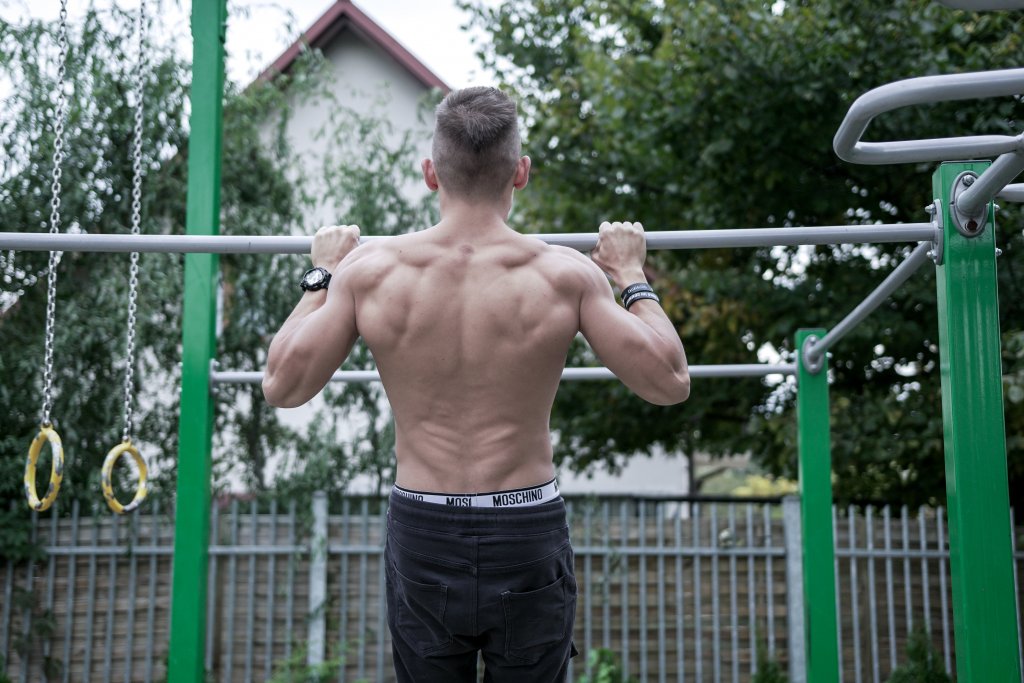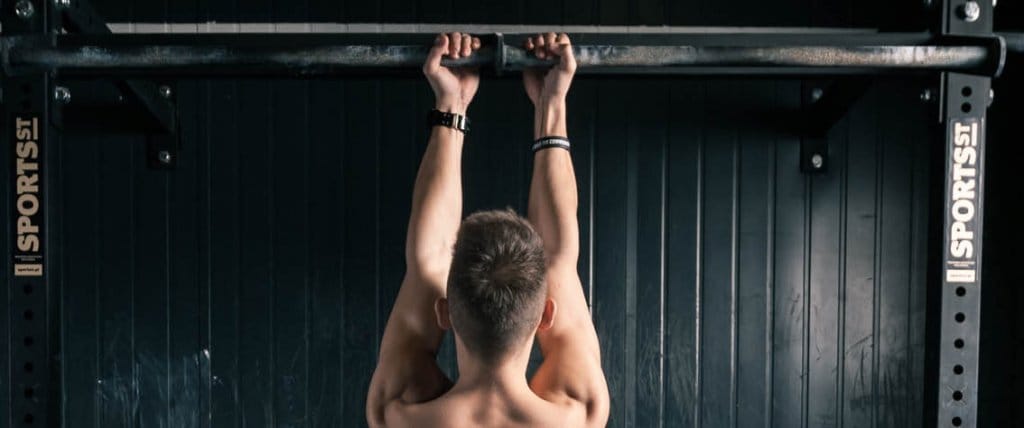
Chin up vs pull up
Well, the title is kind of self-explanatory.
To chin up or to pull up?
That is the question, isn’t it? Unfortunately, none of this two exercising techniques is evidently superior. So this article won’t tell you which one is better or more effective, it will only describe to you the most prominent differences between chin ups and pull ups. Then you’ll be able to judge by yourself which one will suit you better, or – more precisely – how to include each of this exercises into your workout plan. But first, let’s just go through the exercises’ proper form: doing a pull-up or a chin up, you’re to grip the bar and hang with your elbows locked and arms straight. Pull yourself up to your neckline, and remember to do this using only your shoulders, back and arms.
Do not help yourself with swinging your legs. And don’t pull yourself up any higher. That will put your shoulders under too much stress, and you may risk injury. Lower yourself in a controlled manner until your arms are straight again. OK,
the bases are covered. Let’s proceed to the comparison.
Grip
And here’s the most pronounced difference between a chin up and pull up. With a chin up you have a supinated (in other words – underhand) grip, which means that your palms are facing you. The width of the grip is most commonly shoulder length width.
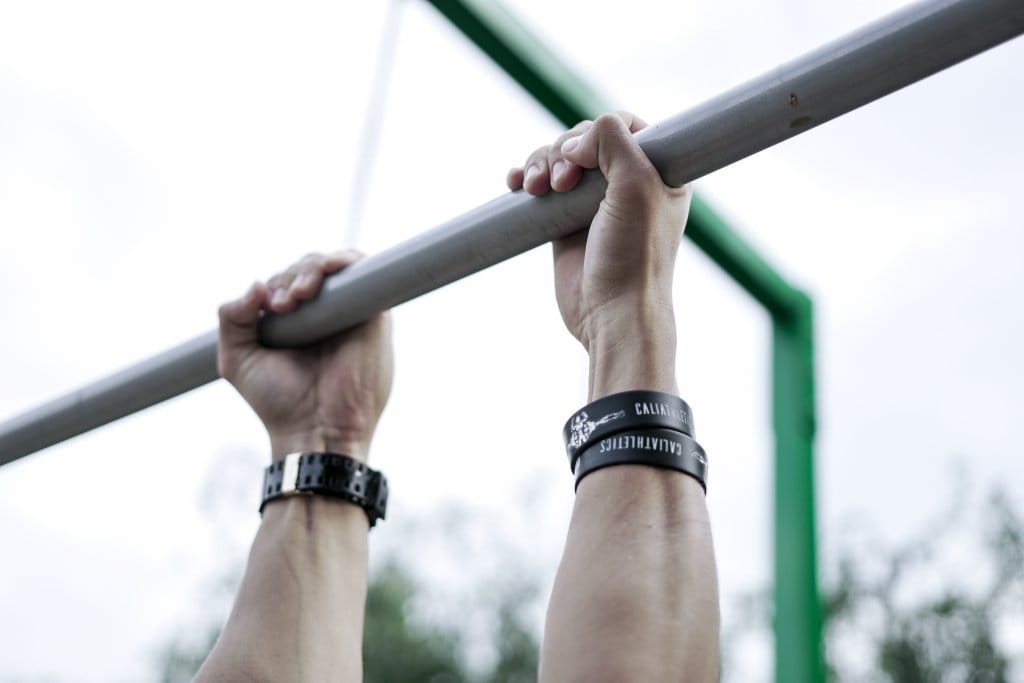
When it comes to a pull up, you have pronated (which means overhand) grip with palms facing away from you. And the width of the grip is
most commonly just a bit wider than shoulder width.
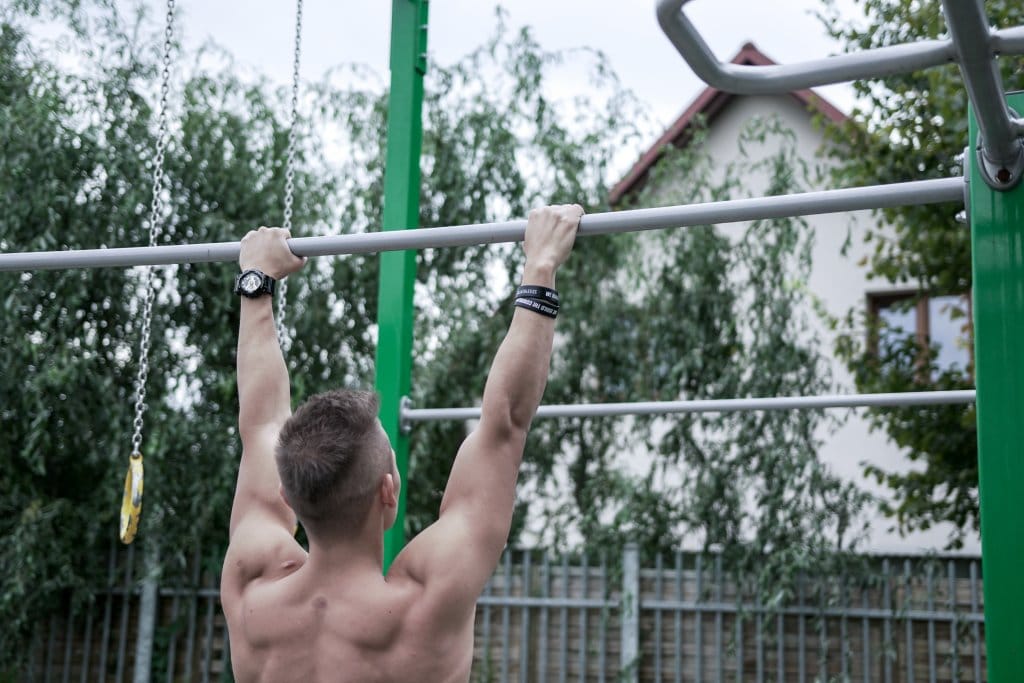
There are also a few grip variation, but here we’ll name only one: a neutral grip with palms facing each other. And here’s the thing – It’s not wise
to make the grip too wide. It can strongly increase the risk of shoulder injuries as the wider the grip gets, the narrower the range of motion becomes. Some people claim that chin up grip is less stressful
on their shoulders so that they would recommend it.
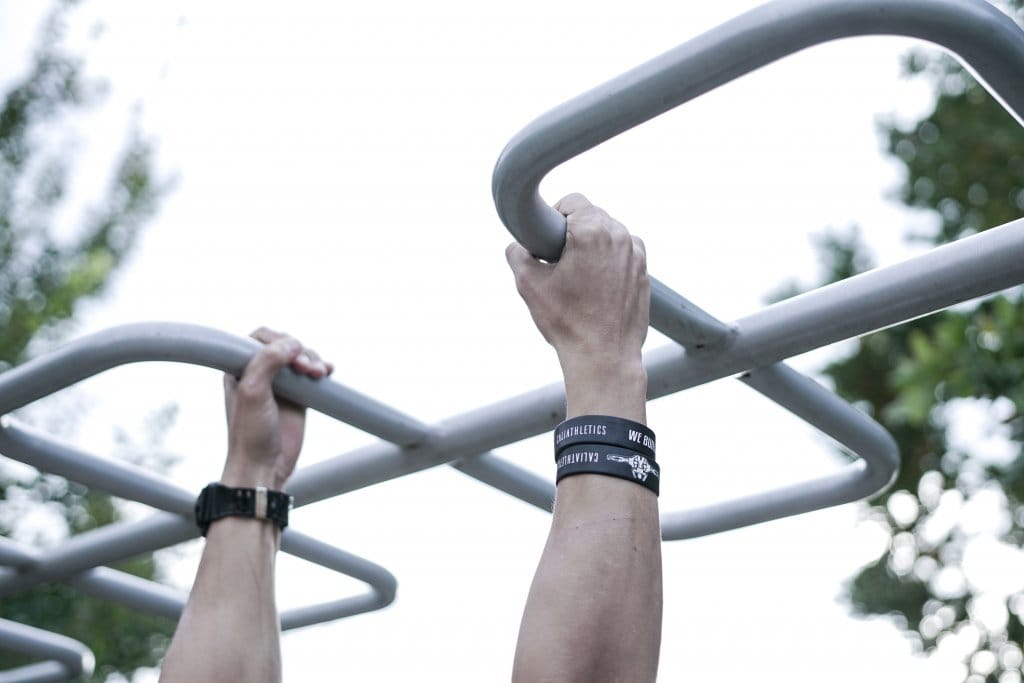
Other people would back up the pull-ups, stating that chin up grip is at the same time less comfortable for wrists and forearms than the pull-up grip. So, it all depends on your condition and possible problems you may have and whether you’d prefer for some reason to spare your shoulders or wrists.
Strength
Generally speaking, chin-ups require less strength than pull-ups. That’s because they put the biceps in a stronger line of pull. Consequently, as a beginner you should find it easier to perform a chin-up than pull up, so – if that’s your situation – it might be a good idea to start with chin ups and after a while proceed to pull-ups. And don’t be surprised – in the beginning, you won’t be able to perform as many pull up reps as you could with chin ups. If you’re worried whether you’re strong enough to perform a pull-up or a chin-up take a look at the end of this article where you’ll be presented with very effective prepping exercises which will make you ready for either chin ups and pull ups.
 Movement
Movement
First some similarities – both exercising techniques work in a vertical pulling movement plane. Both of them target the back (or to be more precise – the lats) and biceps. BUT. Pull-ups use shoulder adduction (so the elbows come down and back from the sides) and chin-ups – shoulder extension (so the elbows come down and back from the front). So in each case, the lats do the work, but the
muscles movement during a pull up is different than during a chin up. So, if your goal is to build muscle or get stronger, it might be a good idea to use both exercises in a complementary way and include them in your workout plan evenly. For example, do chin-ups for eight weeks and then pullups for the next eight weeks. Whatever you decide, remember to include a pulling exercise to your workout routine.
Muscles working
And at last but definitely not least – which muscles work during a pull-up and which performing a chin up? Both pull-ups and chin-ups target the lats, traps and biceps, but it was always said that chinups work biceps harder and the same goes with pull-ups and lats. Recent research shows that the difference isn’t so big as it was originally thought, though. Or rather that the matter is slightly more complicated.
- Lats. As it turned out, when it comes to lats, there’s no huge difference between chin ups and pull-ups. What matters most is the width of the grip. With lats, you can either target lower lats or upper lats. In the first case, it’s best to go for a wide-grip pull-up. In the second, a close-grip chin up is a better option. When it comes to additional upper back muscles, like teres major, they are more activated during a pull up.
- Traps. The thing that matters most in the trap training is scapular movement. So you’ve got it covered in both pull ups and chin ups. But during pull-ups (because of increased effort comparing to chin ups) your traps are more activated.
- Biceps. Their main function is elbow supination and flexion and forearm supination. And when you put pull up vs chin up, it turns out that during the pull up there is elbow extension, but not supination. So when you want to hit the biceps harder, go for chin-ups, but also during pull-ups the biceps are working.
- Exercise preparation
Whether you’ll choose one of the exercises or you’ll just stick to both of them, it’s good to prepare your body for it. Those exercises are not easy to perform, and that’s why they’re sometimes using as an assessing tool – it’s one of the milestones in bodyweight training, being able to perform a pull-up or a chin up as well. So when you’re not there yet, it means that you should make use of one of this preparation exercises. Or all of them for that matter.
- In a chin position, start with a “dead hang”. Your elbows should be straight. Start the pulling movement but focus on using only the shoulder girdle, not the arms.
- In a chin-up position, with arms straight, pull your chest towards the bar. That will hit the lats covering their three functions: extending spine, tilting pelvis anteriorly and extending shoulder joints.
- Still, in a chin-up position, imagine that you’re squeezing a tennis ball between your shoulder blades. What’s important, remember to not just squeeze your shoulder blades together but also pull them down. That will force you to retract your scapula, thus activating the traps. You can combine it with the chest to bar exercise.
- You can prepare for the pull ups/chin ups using gymnastic rings. Sit on the floor with your knees bent and place the rings at the height of your head. Use the neutral grip. Pull yourself up and then gently pull your back down to have your arms straight, your feet on the ground and your back parallel to the floor. Keep the neutral grip. Then pull your upper body up again and switch the grip to the chin up position while pulling the chest toward the rings. Push your butt down to put your back perpendicularly to the ground. And then lower your back to the parallel to the ground position, switch to the neutral grip and straighten your arms. This exercise is called reverse row sit back, and you can perform it adding straighten your legs when in sitting position. Try and keep the rings as steady as possible. It’s best to perform this exercise 2-3 times a week only. It’s good training, though!
- There is also something called negative pull up. It’s when you stand on some elevated surface and jump to a proper pull-up position (on rings or bar). Then, after trying to hold that top position for a while, slowly and in a very controlled motion, lower yourself down. Keep your legs straight, feet in front and shoulders pulled down. You can also finish the exercise with a dead hang – it’s when your whole body is straightened out. Then add one prep pull up at the very end.
- And then you can experiment with this technique – for example during the lowering part stop in the middle and pull yourself back up. And then proceed with dead hang and one pulling prep in the end. You can make the distance from which you’ll be pulling yourself back up again lower and lower. It will make the exercise much more effective, and soon you’ll be able to put all this theory about pull ups and chin ups to practice.
- Pull ups/ chin ups variations.
And when you’ve mastered the pull ups and chin ups, you can go wild a bit and try some of the grip
variations, such as:
- Hockey Grip Pull up is when you’re positioned not parallel to the bar and use the neutral grip. You can put both your hands close to each other.
- Lateral Slide Pull up you do the usual pull up, but instead of lowering yourself down immediately, you slide your chin towards each of your fists.
- Towel Pull up – when you’re not holding a bar, but two towels hung on it.
- Mixed-Grip Pull up – one hand using supinated grip (like for a chin-up), other one pronated grip (like for a pull up).
- L-Pull is when you’re pulling yourself up with your legs straighten in front of you (which makes your bode look like letter L, hence the name)
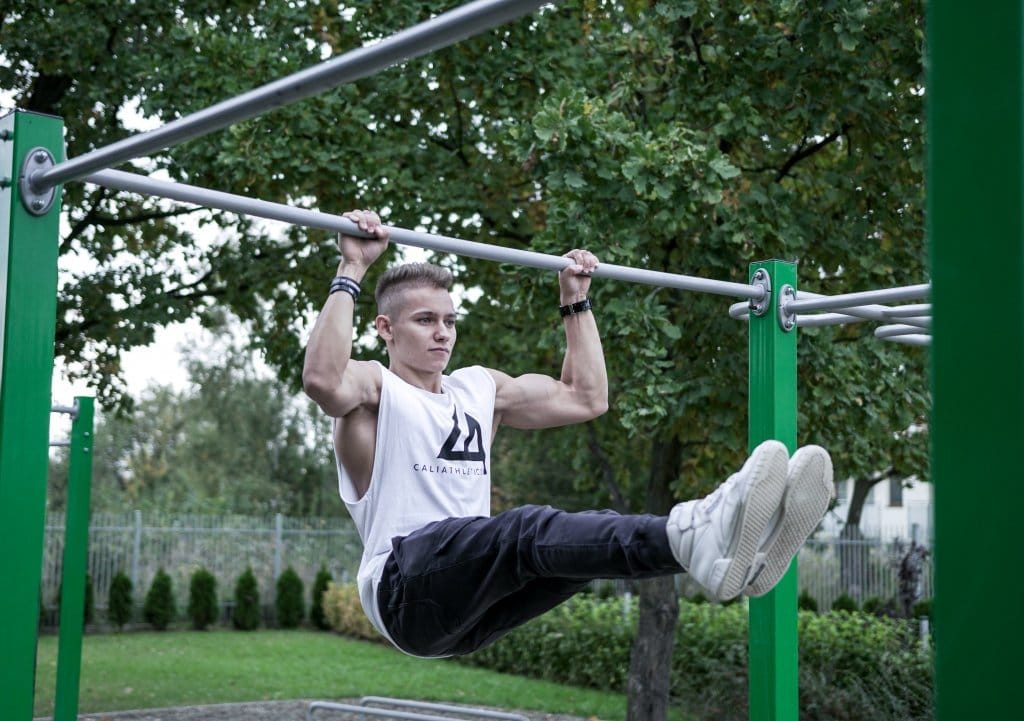
- Eccentric Chin up is when you’re pulling yourself up rather fast, then hold it and start lowering your body in a very slow and controlled way.
- Crossover Pull up is performed with bending each knee to the opposite elbow during pulling up
- Single-Arm Chin up – as in a name – you’re pulling yourself up using only one arm, the other one holds the working arm by the wrist.

